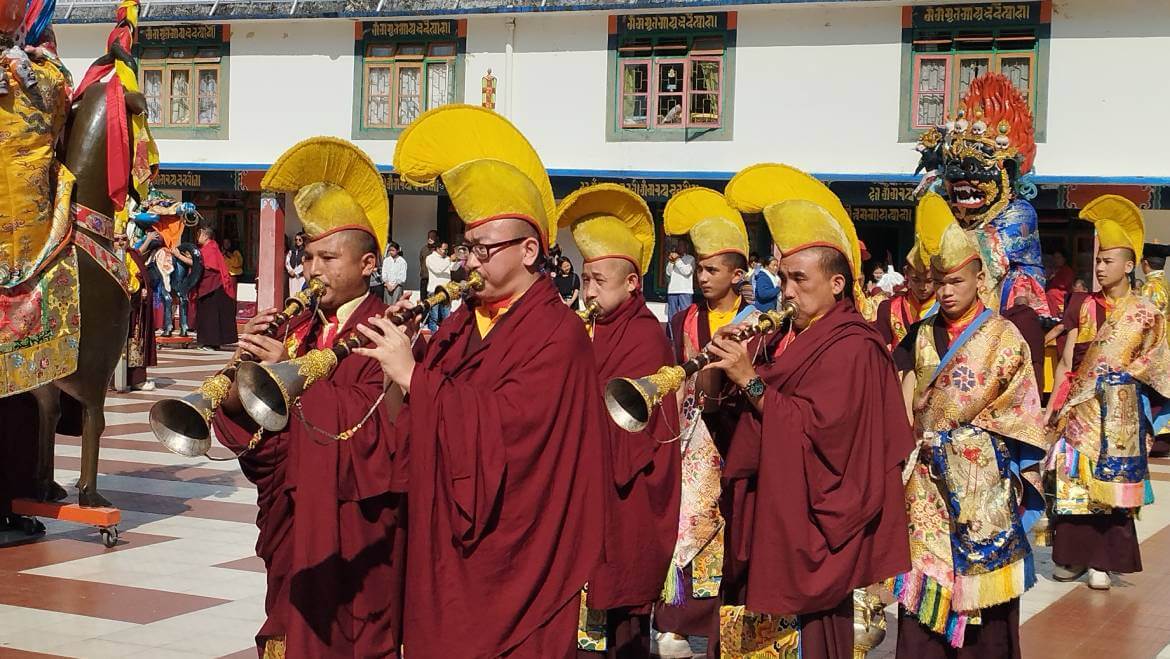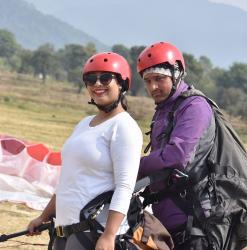Festivals have always been about the feeling of community and oneness, where the people come together forgetting all differences. With a plethora of tribes that reside in the different states of the northeastern region of the country, festivals here offer a chance for them to come together in a common celebration. Showcasing their rich culture and heritage that have been passed down through generations, festivals in the northeast signify a much deeper connection between man and nature.
Most of the festivals that are celebrated here are either related to the religion of Tibetan Buddhism, beginnings of a New Year, and are in appreciation and hopes for a prosperous season of harvest. Including traditional folk and tribal forms of music and dance, festivals here can extend over a period of days to several weeks and function as a wonderful opportunity for the people belonging to different tribes to bond.
The sumptuous delicacies, vibrant costumes, soulful music, warm hospitality and the lively ambiance that these festivals provide, are enough reasons to be a part of the festivity in the North East.
Find out more about some of the most popular festivals in the North Eastern states as you read along.
| Festival Name |
State |
| Losar |
Arunachal Pradesh |
| Saga Dawa |
Sikkim |
| Ambubachi Mela |
Assam |
| Dree Festival |
Arunachal Pradesh |
| Moatsu Mong |
Nagaland |
| Anthurium Festival |
Mizoram |
| Lui-Ngai-Ni |
Manipur |
| Bihu Festival |
Assam |
| Hornbill Festival |
Nagaland |
| Losoong |
Sikkim |
| Nongkrem Dance Festival |
Meghalaya |
| Kharchi Puja |
Tripura |
| Chapchar Kut |
Mizoram |
| Wangala Festival |
Meghalaya |
| Kang Chingba |
Manipur |
Also Check Out: Popular Tour Packages for North East India
Losar, Arunachal Pradesh
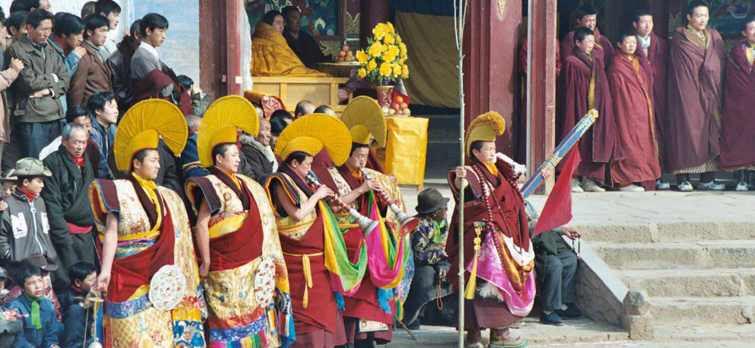
A three day festival, Losar is a major festival of Arunachal Pradesh celebrated to mark the start of the Tibetan New Year. A time for new beginnings, this festival is observed by the Tibetan Buddhist communities of the region with the tribes of Monpa, Sherdukpens, Memba, Khamba and Nah come together to celebrate the occasion with enthusiasm. These tribes follow the order of the Mahayana sect of Buddhism and have celebrations that can last up to a period of 15 days depending on the rituals.
On the first day of the festival, the priests make offerings to the highest priest called the Dharmapala or Palden Lhamo, with the people visiting the Tawang Monastery to offer prayers for the New Year. Celebrating Losar, people indulge in a Tibetan noodle soup called Guthuk, made from nine ingredients symbolizing nine fortune symbols for an auspicious year ahead. The second day of the festival is reserved for the King and is known as Gyalpo Losar and involves the people visiting friends and family. Greetings of “Tashi Delek” or good luck are shared with each other and the day is filled with eating celebratory foods, playing festive games, and fireworks. The third day includes donating food and clothes, setting up prayer flags, and lighting up butter lamps.
Also Read: Must Visit Hill Stations in Northeast India
Saga Dawa, Sikkim
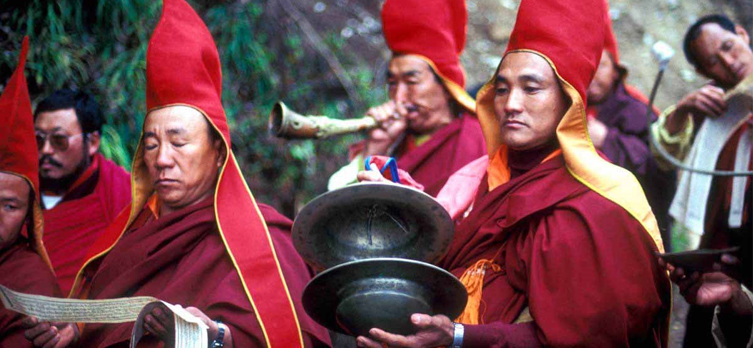
A major Buddhist festival for the people of Sikkim, Saga Dawa is considered to be one of the most auspicious occasions. With its name, “Saga” meaning “fourth” and “Dawa” meaning “month”, Saga Dawa falls on the full moon of the 4th month, according to the Tibetan calendar. The festival commemorates the birth, enlightenment and death of the Buddha and is also known as the ‘Month of Merits’.
It is during this time that the devotees spend performing good and kind deeds in hopes of accumulating good karma that will help them receive a suitable rebirth. The blessed atmosphere of Saga Dawa, according to the devotees, makes the benefit of the good deeds multiply a thousand fold.
Even though the main celebration of Saga Dawa takes place on the 15th day of the month, festivities happen throughout the blessed month. Devotees of the Mahayana sect of Buddhism spend this time doing good deeds such as helping the poor, visiting temples and monasteries, and tying up prayer flags all around town. Circumambulating or performing Kora around monasteries and pilgrimage sites during this time is believed to be especially beneficial. In the capital city of Gangtok, as well as in the many towns and villages of Sikkim, you can see colorful processions by monks carrying holy texts, as well as portraits and statues of the Buddha. Many participate by chanting mantras, carrying the religious text and turning the prayer wheels.
Date for 2024: 23rd May, 2024
Also Read: Top Snow Destinations in Northeast
Ambubachi Mela, Assam
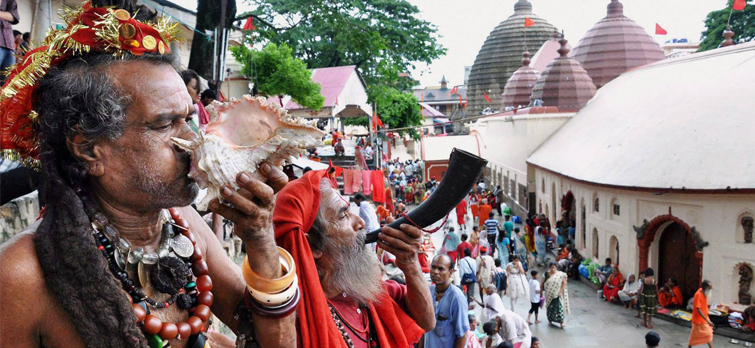
Reckoned to be one of the major festivals in Northeast India, Ambubachi Mela is held in Guwahati, Assam. The festival is celebrated during the month of June in the Kamakhya Temple. Kamakhya Temple is one of the important pilgrimage sites in India and is dedicated to Goddess Sati, the wife of Lord Shiva. Counted among the holy Shakti Peetha Temples of the country, Kamakhya Temple worships the womb of the goddess. Celebrating faith, fertility and the divine feminine, Ambubachi Mela is an annual festival that takes place at the temple.
Thousands of devotees from all over India and abroad throng the temple for the Ambubachi Mela, when it is believed that during this time of each year Goddess Kamakhya goes through her annual menstrual cycle, which is observed for a period of three days. During this time though, the temple remains closed and is considered unclean, however the devotees throng the temple’s premises to seek Goddess’ blessing even though the doors are closed. After three days the temple reopens and the devotees are allowed to offer prayer to the deity. It is also during this time of the year when the Tantrik Cult is seen performing various unusual rites at the Kamakhya Temple.
Date for 2024: 22nd to 26th June, 2024
Also Read: Top Tourist Destinations in Assam
Dree Festival, Arunachal Pradesh
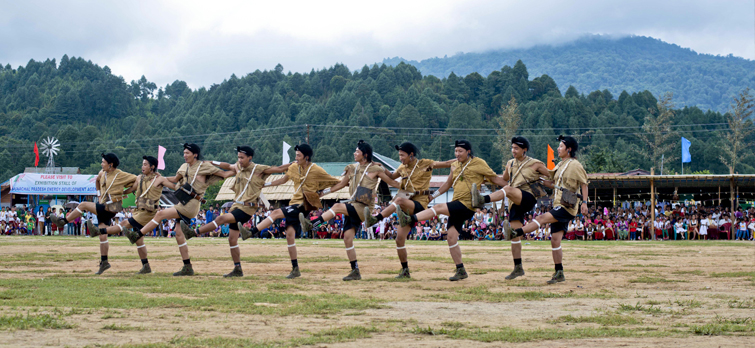
Dree Festival is an important celebration for the Apatani Tribe of Arunachal Pradesh. Although Dree is the festival of the Apatani Tribe, it has gained popularity amongst other tribes in Arunachal Pradesh as well. Taking place on the 5th of July each year, celebrations associated with the festival begin from the 4th of July itself. An agricultural festival, Dree is celebrated when crop plantations are over. Worshiping the five gods of Tamu, Metii, Medvr, Mepin, and Danyi, the people praise them to protect their crops and for a bountiful harvest.
Celebrated across different villages of Arunachal, the main and the most extravagant of celebrations take place in the state’ Ziro Valley. During the festival, ritualistic sacrifices of fowls, eggs, and animals are made by priests, along with distribution of rice and millet beer to honor the festive spirit. Traditional dances are performed while cucumbers are distributed to all as a symbol of good harvest. At Dree, various sports and games take place with football being a major event that attracts many people. Along with football, volleyball, badminton, and other traditional games are also organized. Events that promote the Apatani language such as essay writing competitions are also held during the festival. A festival that hopes for a rich harvest, Dree Festival in Arunachal Pradesh is an important celebration.
Date for 2024: 5th July, 2024
Also Read: Top Places to Explore in Arunachal
Moatsu Mong, Nagaland
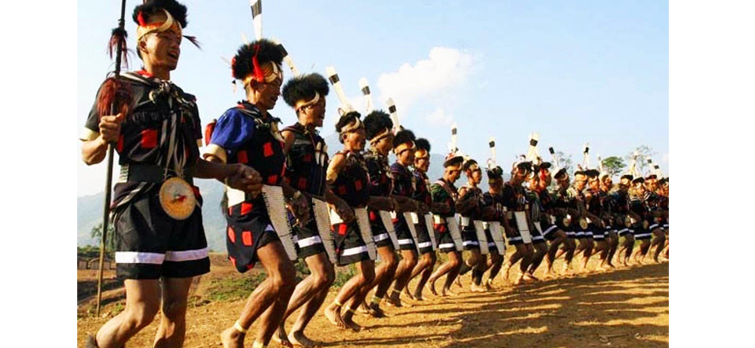
This festival of the Ao tribe in Nagaland marks the completion of the sowing season. A colorful festival that celebrates the rich Naga culture, it is a three-day festival that is celebrated from May 1 to 3 each year. Held in Mokokchung district, Moatsu Mong festival begins with the cleaning of wells and the brewing of beer. During the festival, people savor the taste of local delicacies and enjoy cultural programs where the men perform traditional warrior dance and the women sing songs that praise the Ao villages.
A festival of community bonding, Moatsu Mong is also an occasion to celebrate friendships, where the people exchange gifts, have celebratory feasts, and partake in events surrounding a bonfire. Taking place after the completion of the sowing season, the festival acts as a time of recreation and a time of rest after a period of doing hard labor by cleaning wells, constructing and painting the houses of the elderly, and clearing the land for farming, among other activities. An event that enjoys the spirit of the community, Moatsu Mong includes performances of lively songs and dances, as well as elaborate feasts that serve traditional wine and delicacies of meat. The event is also followed by predictions and forecasts about the future of the village and its people.
Date for 2024: 1st to 3rd May, 2024
Also Read: Top Reasons to Visit Northeast
Anthurium, Mizoram
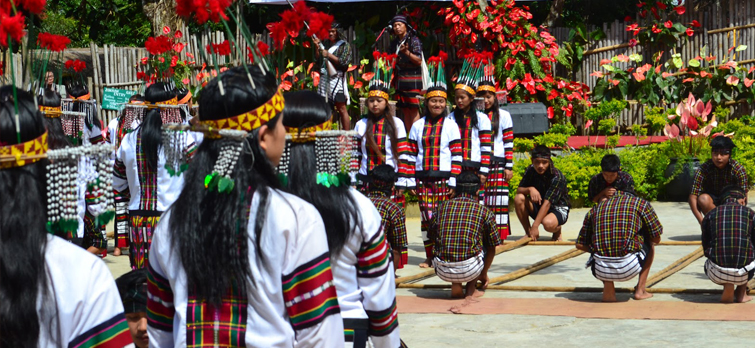
Named after a famous flower Anthurium, Anthurium Festival is a major festival in Mizoram. Anthurium is celebrated with an objective of promoting tourism each year and is organized by the Tourism Department of the state along with their Department of Horticulture. Lying at a distance of about 70 kms from the capital city of Aizawl, the small village of Reiek acts as the venue for this fest. A means to showcase the rich tradition and culture of Mizoram, the festival has been organized ever since 2006 without interruptions.
Among the more popular festivals of Mizoram, the Anthurium Festival is celebrated with a display of traditional music, dance, games, fashion shows, as well as the local handloom and handicrafts. Along with the traditional activities of the state, the festival also offers adventure sports such as zip lining, rifle shooting, and rock climbing for its visitors as well. A colorful festival that showcases the beauty of Mizoram, Anthurium Festival is organized during the season of blooming of the Anthurium flowers. It is during this time that the village of Reiek, lying along the backdrop of the Reiek Mountain, finds itself blanketed in a cover of multi-colored Anthurium flowers. Offering a range of activities and experiences, Anthurium Festival is something that you must visit the state of Mizoram for.
Also Read: Popular Must See Cultural Festivals in India
Lui-ngai-ni, Manipur
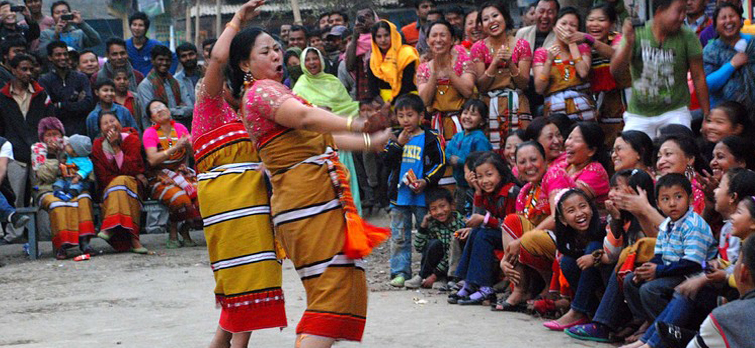
Lui-Ngai-Ni is a festival of Manipur celebrated by the Naga tribes residing in the state. A festival of the Nagas, it is celebrated not only in Nagaland but in the areas inhabited by the Naga Tribes in Manipur as well. Taking place on the 15th of February each year, it marks the seed sowing season. Known for strengthening the bond between the Naga tribes, Lui-Ngai-Ni is celebrated with much pomp. Some of the Naga tribes that are involved in the celebration include Mao, Maram, Poremai, Liangmai, Maring, Tarao, Chothe, Anal, Kharam, Koireng, Thangal.
During the festival of Lui-Ngai-Ni, performances of traditional music and dance are held that showcase the rich culture and heritage of the Nagas. Along with these performances, traditional games such as oiled bamboo pole climbing, drum thumping, and fire acrobatics also take place. These activities of music, dance, and games are prepared to please the gods for a bountiful and rich harvest season. Along with the Naga Tribes of Manipur, other tribes of the Nagas from the nearby states of Nagaland, Arunachal Pradesh, and Assam also come to attend the Lui-Ngai-Ni hoping for a prosperous season of harvest. Although the festival is conducted in the many villages of Manipur, the main events happen in the villages of Senapati, Ukhrul, Chandel, and Tamenglong.
Also Read: Top Natural Wonders of North East India
Bihu Festival, Assam
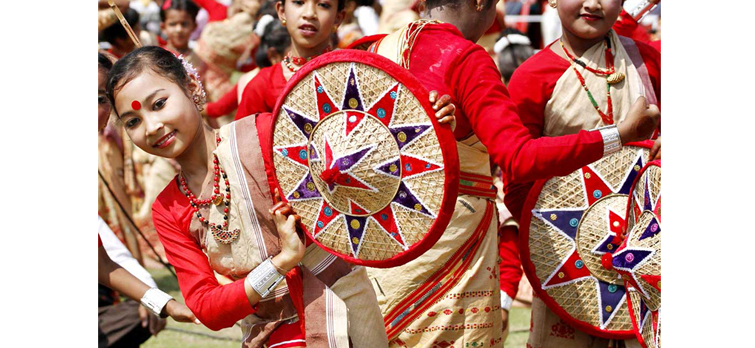
The festival of Bihu in Assam is celebrated throughout the year on 3 separate occasions, and are called Bohag Bihu or Rongali Bihu, Magh Bihu or Bhogali Bihu, and Kati Bihu or Kongali Bihu, each with its own significance, celebrating the beginning of sowing season, end of harvest season, and end of sowing season respectively. Along with marking the start of the sowing season, Bohag Bihu also marks the beginning of the Assamese New Year and calls for a huge celebration beginning from April 14 each year.
Although the festival is observed for 7 days, the celebration extends for about a month. The first day of Bohag Bihu is called Goru Bihu, in which cows and bulls are bathed and fed and is the time when the people pray for the safety of the livestock. The main festival is observed on the second day when the people greet each other and present their relatives with Gamosa or the traditional hand-woven cotton towels. On this day, young Assamese men and women form groups and perform the Assamese Bihu Dance. Assamese delicacies are prepared out of which Pitha, a dish made of rice powder, wheat flour, coconut, sesame and jaggery is the specialty. Stages are set in different parts of the state, where Bihu Dance is performed on a regular basis for the entire month.
Also Read: Must Visit Pilgrimage Destinations in Northeast India
Hornbill Festival, Kohima Nagaland
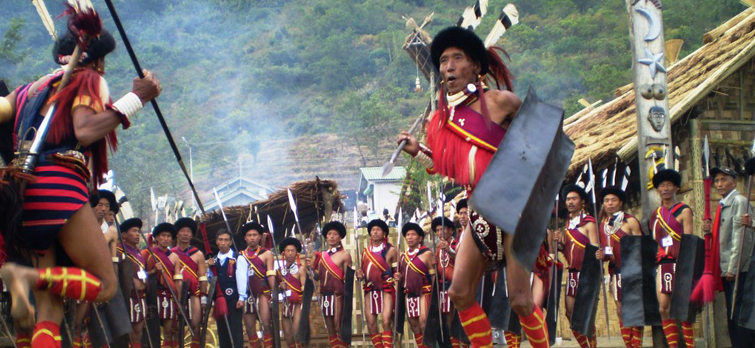
Named after the bird Hornbill, Hornbill Festival is a major festival in Nagaland that is organized by the Government of Nagaland. Like many festivals in the state, Hornbill festival is also related to agriculture. It is a festival that covers a span of 7 to 10 days and begins with immense zeal from the 1st of December every year. Held in Kisama Heritage Village, this festival is attended by all the major tribes in Nagaland.
An annual event, the Hornbill Festival is a good time to witness the cultural vividness of the different tribes of Nagaland and provides the opportunity to bond with different communities of the state. The major tribes of the state partake in this festival and display their own songs, dance and other performances. The festival beautifully depicts the tribal culture preserved by the tribes despite modernisation. The warrior log drums, colorful headgear, and soulful war cry, exquisite costumes are some of the highlights of the festival. The Kohima Night Bazaar and contests like pork eating and King Chilly add tingly flavor to the festive mood. Not just the performances, you can also indulge in the various traditional Naga cuisine that is available for the visitors.
Date for 2024: 1st to 10th December, 2024
Also Read: Best Destinations for Family Vacation in North East India
Losoong, Sikkim
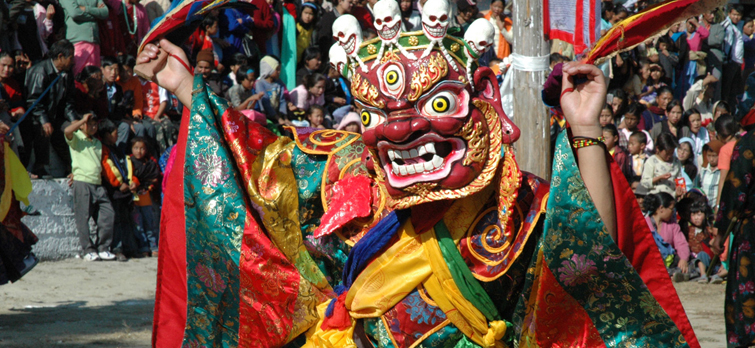
Marking the end of the harvest season, Losoong or Namsoong is celebrated each year in the month of Sikkim. Along with celebrating the harvest, Losoong is also associated with the end of the Tibetan Year. Although the Losoong Festival is a traditional celebration of the Bhutia Tribe, the Lepchas Tribe also celebrate it with equal vigor and zeal. During this time traditional dances such as the Chham Dance and the Black Hat Dance are performed at the monasteries and the people make merry by drinking the locally brewed wine called Chaang.
One of the highlights of the festival remains the Chham Dance performed by monks at the monasteries. The dance is a dramatic interpretation of Buddhist texts and mythologies and represents the victory of good over evil through this religious performance. A time for renewal, the festival of Losoong includes indulging in the local delicacies as well as the traditional arts and crafts of Sikkim. Along with these, archery competitions are also organized to further enhance the festival spirit. Attracting a number of tourists from across the country and abroad, Losoong Festival is a popular festival of Sikkim.
Date for 2024: 31st December, 2024
Also Read: Top Things to Do in Sikkim
Nongkrem Dance Festival, Meghalaya
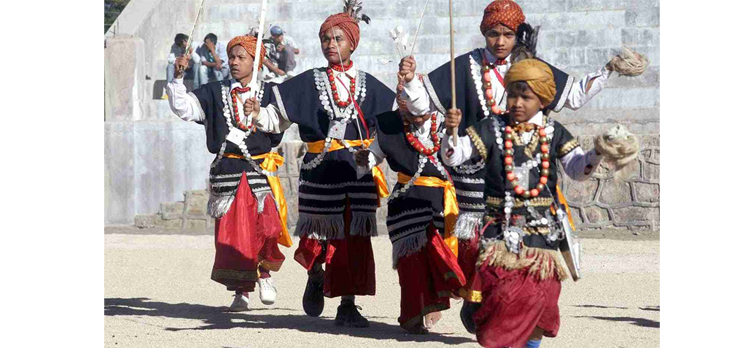
Ka Pomblang Nongkrem Dance or the Nongkrem Dance Festival is a way of celebrating the harvest for the people of Meghalaya. The festival is celebrated in the month of November each year by the Khasi Tribe, in which a high priest sacrifices goats as a thanksgiving offering to Goddess Ka Blei Synshar, along with offerings to the ancestors as well. It is a five day festival in which young men and women dressed in colorful traditional costumes perform tribal dance.
Nongkrem Dance Festival is held at the residence of the Tribe’s Chief in the town of Smit, at a distance of about 15 kms from the famed city of Shillong. An important festival for the Khasi Tribe, the festival is organized as a form of thanksgiving for a bountiful and plentiful harvest season. During the performances put up by the young people of the tribe, young women can be seen dressed in the colorful, traditional attire along with jewelry, with the men performing an energetic dance, mostly holding a sword in one hand and white Yak hair whisk in the other. A popular festival of Meghalaya, Nongkrem Dance Festival is an event that you must attend to better understand the culture and lifestyle of this beautiful state in India’s northeast.
Also Read: Best Places to Visit in Meghalaya
Kharchi Puja, Tripura
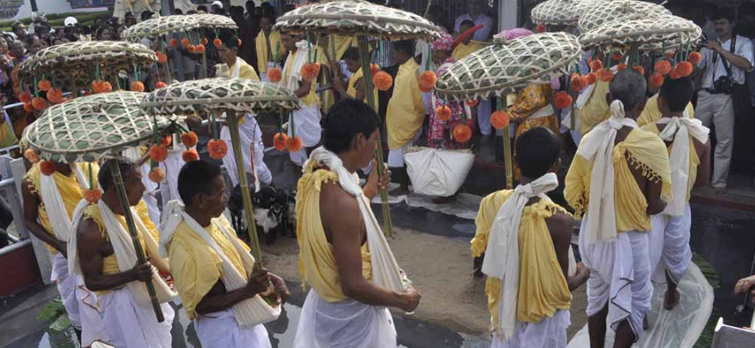
Kharchi Puja or the “Festival of 14 Gods” is a popular festival in Tripura. The Puja, or worship was once something that was only performed by the royal households but now however with changing times, Kharchi Puja has become common to most houses in Tripura. It is a 10-day long festival that is marked by animal sacrifice and worshiping the 14 gods as instructed by Lord Shiva. Although it is a festival of tribal origins, Kharchi Puja is celebrated by the non-tribal people of the state as well.
The festival takes place in the month of July each year in Old Agartala or the Puran Haveli, where there is a temple that houses 14 deities. In Kharchi Puja, the word “Khar” denotes “sin”, and “Chi” means “cleaning”. According to the people, it is during the time of the Ambubachi Mela that the presiding goddess of Tripura, Tripura Sundari undergoes menstruation leading the earth to become unclean. As a result, the Kharchi Puja is held to cleanse the earth of all impurities and clean the people of the state from all sins. A grand fair is held for seven days commemorating the occasion when thousands of people throng Tripura and enjoy the many cultural programmes and fairs.
Date for 2024: 14th July, 2024
Also Read: Top Places to Visit & Things to Do in Tripura
Chapchar Kut, Mizoram
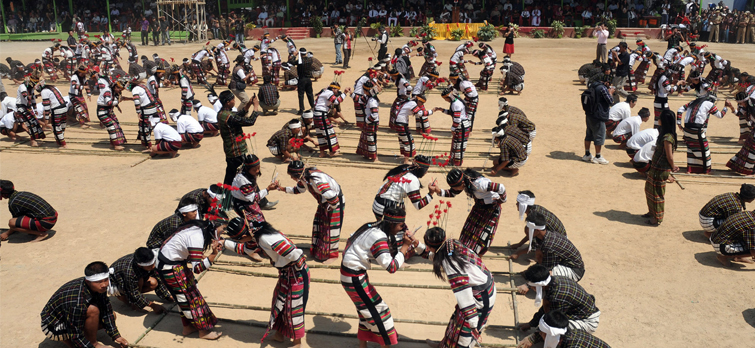
Celebrated in the month of March every year, Chapar Kut marks the time for planting in the state when the grounds are cleared of trees for a slash-and-burn cultivation, locally known as ‘jhum’. An agriculture festival of Mizoram, the highlight of this festival is the bamboo dance called Cheraw. Apart from this special dance, different styles of dances such as Khuallam, Chheihlam, Chai and Sarlamkai are also performed during the festival. Along with this, traditional songs are also sung amidst the cymbal clashes, beats of the drums and sound of the gongs.
Handicraft, art and flower shows along with food festivals and music competitions are organized during the festival as well. Main celebrations of Chapchar Kut take place in Mizoram’s towns of Lunglei and Saiha. A celebration held in hopes of a bountiful harvest, Chapchar Kut is an occasion that you must experience once. It provides an occasion for the many tribes inhabiting Mizoram to come together and showcase their talents at a grand scale. After arduous labor of felling trees for cultivation, the festival is a breath of fresh air for the hardworking community. A colorful and delightful festival, Chapchar Kut provides an opportunity to learn about the Mizo heritage and culture for its visitors.
Also Read: Best Places to Visit & Things to Do in Mizoram
Wangala Festival, Meghalaya
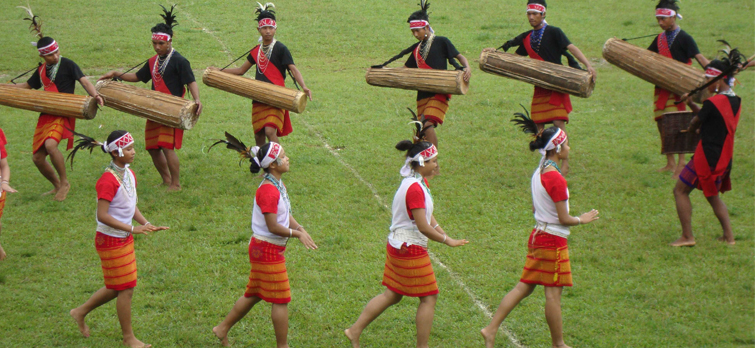
Wangala is a winter festival in Meghalaya that is mainly celebrated by the Garo Tribe of the state. It is held in the second week of November each year in Asanang village near Tura in the Garo Hills and is considered to be a post-harvest celebration. The festival is celebrated in the honor of the Sun God, Misi Saljong, who is considered to be a generous giver as a form of thanksgiving and marks the beginning of winter. The village chief called Nokma performs rituals a day before the festival begins during which freshly brewed rich beer, cooked rice and vegetables are offered to Misi Saljong.
The first day of the festival called the “Ragula” is celebrated at the house of the village chief. It is on the second day “Kakkat” that the villagers indulge in the public celebrations using the music of the drums. Also called ‘100 Drums Festival’, the main attraction of the Wangala Festival is the music. Drums, orchestra and flutes offer a wonderful and mesmerizing ambiance that amplifies the festive mood even further. The feathered headgear is yet another attraction that is worn by everyone celebrating the festival. An important festival for the Garo Tribe of Meghalaya, observing the Wangala Festival is a fun way to learn about the culture and practices of the tribal people of the state.
Date for 2024: 8th November, 2024
Also Read: Best Places to Visit in Shillong
Kang Chingba, Manipur
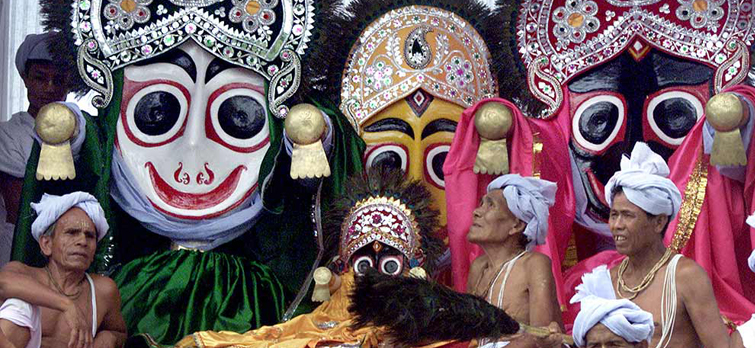
Kang Chingba is the biggest Hindu festival in Manipur, observed by the Meitei community who ardently worship Lord Vishnu. The Kang Chingba festival is celebrated in the month of July each year and is similar to Puri Rath Yatra that takes place in Odisha. It is a 10-day festival, which celebrates the journey of Lord Jagannath, his brother Balabhadra, and sister Subhadra to the Puri Temple in Odisha.
Thousands of devotees throng the city of Imphal during the festival and help pull the massive chariots that carry the deities. The celebrations begin on the second day of the fourth lunar month according to the Manipuri calendar and go on for a period of 10 days. Large feasts are organized and people dance all through the night. The Yatra begins from Sri Sri Govindajee Temple in Imphal and the car in which Lord Jagannath is carried is called ‘Kang’. On the ninth day devotees also offer a ritualistic dance to the gods called the Choitep Chongba, after which they share a prasad offering with each other known as Khechri. On the tenth day, the Rath Yatra is performed, after which the next day devotees fast for the day. The twelfth day sees entertainment activities and rituals performed by unmarried women followed by the ritualistic practice of Hari Soyon the next day bringing the festival to an end.
Date for 2024: 8th July, 2024
Also Read: Best Places to Visit in Manipur
The northeastern part of India, with its eight states, offers different experiences altogether. Explore the popular festivals of the region that originate with their own importance rising from tribal and religious practices. From celebrations that thank the gods for a bountiful harvest to gatherings that wish for a blessed harvesting season, the festivals of the northeastern states are one of a kind. Visit the states and experience the thrill and excitement of the many tribes of the region and witness a new way of life.
Other Interesting Blogs to Read
About the author
From the Lake District, Nainital, Nidhi Singh is a travel writer whose love for mountains can be seen in her write ups. Talk about solo travelling, indulging in adventure activities, binging on good food, planning budget trips or the Aurora Borealis and you will get all her attention. It is the wanderlust that keeps her going and if at all she could get one wish granted she would love to live a life less ordinary. Follow her on Twitter, Facebook & Instagram.

 +91-9212777225
+91-9212777225 Plan Your trip
Plan Your trip